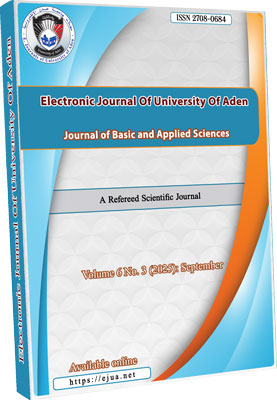CLINICAL CHARACTERISTIC AND PROGRESSION OF ACUTE CORONARY SYNDROME IN YOUNG PATIENTS IN ADEN-YEMEN 2024-2025
DOI:
https://doi.org/10.47372/ejua-ba.2025.3.457Keywords:
Acute coronary syndrome, Risk factors, Prognosis, Young ageAbstract
The prevalence of acute coronary syndrome (ACS) has been rising in the younger population worldwide. Although less common than in older populations, is a serious condition with unique risk factors and presentations. This linked to the growing prevalence of traditional cardiovascular risk factors among younger people, such as type 2 diabetes, hypertension, obesity, and hyperlipidemia, which have led to a rise in atherosclerotic coronary artery disease (CAD). Additionally, emerging research points to the influence of less traditional risk factors, including chronic inflammation, autoimmune diseases, drug use, psychosocial factors, and novel biomarkers in the early onset of CAD. These factors collectively contribute to the rise in premature CAD, highlighting the need for improved prevention strategies and public health efforts focused on younger populations. The study aims to assess the characteristics and outcomes of ACS in young patients. A hospital- based descriptive cross-sectional study was conducted in 104 patients who were diagnosed and treated as ACS at private cardiac units of Aden-Germany Hospital in the period between April 2024 and January 2025 were studied with reference to clinical profile and risk factor analysis based on cardiac enzyme biomarkers and cardiac invasive and non- invasive assessments. The mean (± SD) age was) 28.8 ±09) years, 100 patients (96.2%) were male, 4(3.8%) were female. Smoking were with 56 (53.8%) and 48 (46.2%) were with Khat and shamma chewing risk factors. A high percentage of patients 90) 86.5% (presenting with chest pain, with vast majority being non- diabetic 79 (98.8%). 57 (95%) of myocardial infarction (MI) patients with elevated ST segment (STEMI) were male. Elevated troponin level was highly significance (p value = 0.001). Most patients were with mild left ventricular ejection fraction and single coronary artery vessel affected (35.6%, 60.8% respectively). Killip class I represent the majority (61.5%) with a significance proportion (66.7%) were under the age of 30 and had non-elevated ST- segment (79.5%). The majority of the patients were male. Smoking, Kat and shamma chewing presumed risk factors. Killip class I and elevated ST segment quite common.
Downloads
Published
How to Cite
Issue
Section
License

This work is licensed under a Creative Commons Attribution-NonCommercial 4.0 International License.










